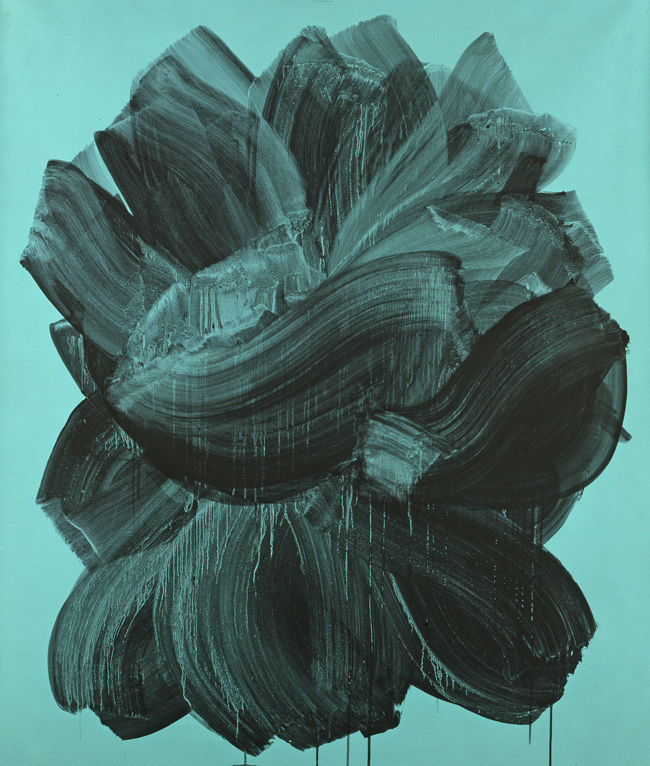VANITÉS
Soudain, dans telle fleur au noir, le coeur est une vague qui se retourne en plissé. Et dans telle autre la vague se redouble comme un noeud de ruban. On a alors la nette impression que ces pivoines du noir sont déjà les fleurs du pli. Un pli qui s’émancipe peu à peu, un pli inflexion, un pli opération infinie à la Deleuze. Un pli informel qui se métamorphose en une idéalité inflexueuse, où la texture florale se meut en véritable vortex de lumière, enveloppant toutes choses de sa peau. Et je comprends alors que la traversée du noir et l’invention du turquoise ne seraient en fait que « la ligne d’ombre » d’une oeuvre où les fleurs s’arrachent au chaos pour retrouver notre monde, désormais habité de tous les Goya. Si bien qu’hybridées, instables et saisies dans leur présence instantanée, ces fleurs noires rejoignent les fleurs virtuelles du désastre en une même tension. Manet, qui aimait particulièrement Goya et les pivoines, pensait qu’« un peintre peut tout dire avec des fruits et des fleurs ou des nuages seulement ».
Extrait du texte de Christine Buci-Glucksmann pour la monographie de Najia Mehadji. Éditions Somogy, octobre 2014
VANITÉS
Suddenly, in a given black flower, the center is a wave that folds into a twist. In another, the wave doubles into a ribbon- like bowknot. We get the clear impression that these peonies of blackness are already flowers of the fold. This fold slowly emancipates itself, inflecting itself in an infinite, Deleuze-style folding operation, a formless fold that metamorphoses into an inflexual ideal in which the floral texture becomes a veritable vortex of light that wraps everything in its cloak. And then I realize that the “time spent in the blackness” and the discovery of turquoise are probably just the “shadow line” of an oeuvre where flowers are yanked from chaos in order to rejoin our world, henceforth inhabited by all the Goyas. Thus these black flowers - hybridized, unstable, and grasped in their momentary presence - rejoin the virtual flowers of disaster in a shared tension. Manet, who was particularly fond of Goya and peonies, thought “a painter can express everything with fruit and flowers or even clouds alone.”
Extract from the text of Christine Buci-Glucksmann published in the monograph of Najia Mehadji. Editions Somogy, October 2014
DIAPORAMA / Slideshow

2008, Gouache et acrylique sur toile, 140X110cm

2008, Gouache et acrylique sur toile, 145X120cm
Cliquez sur les images pour les agrandir
Click on images to zoom in